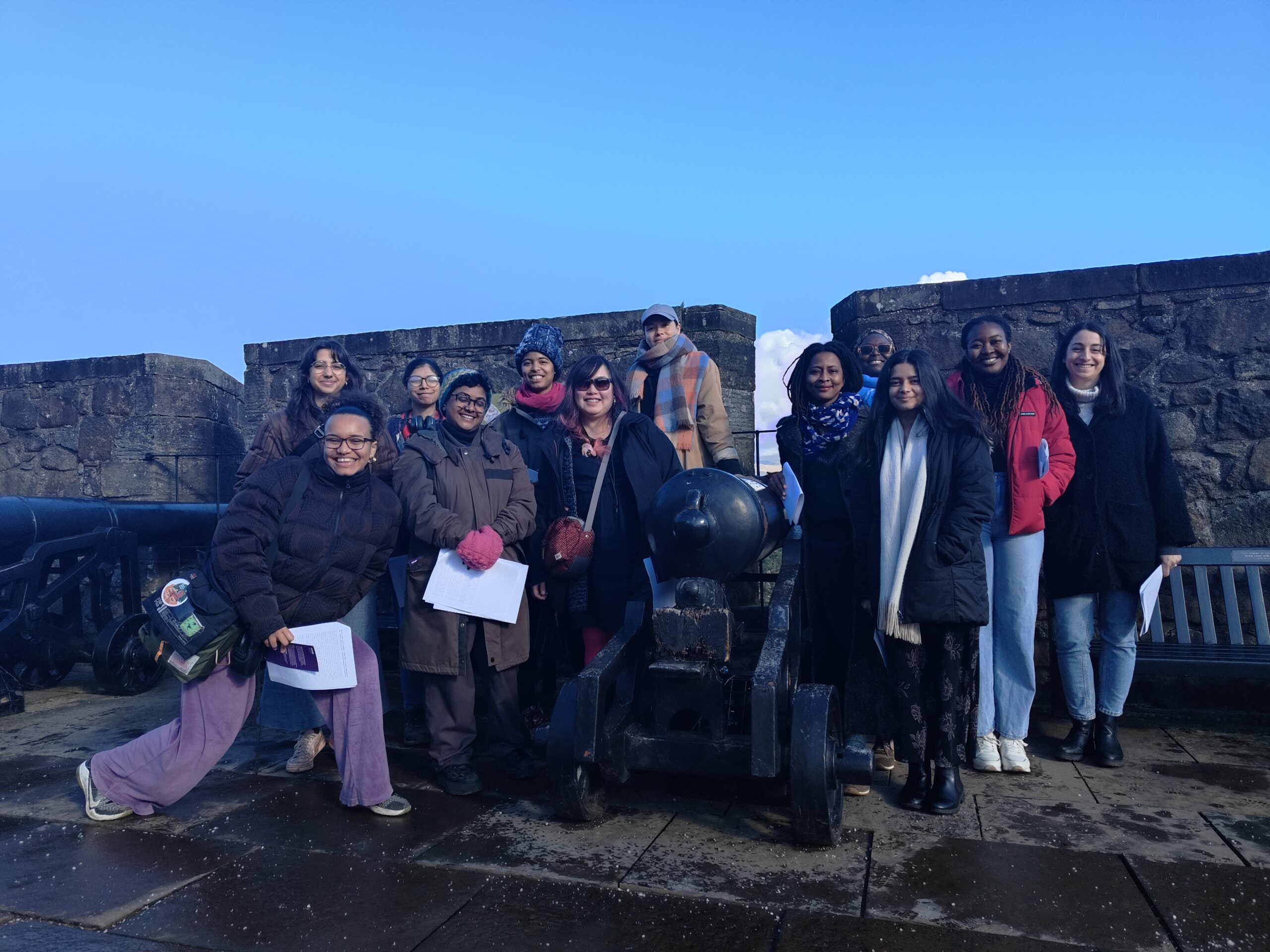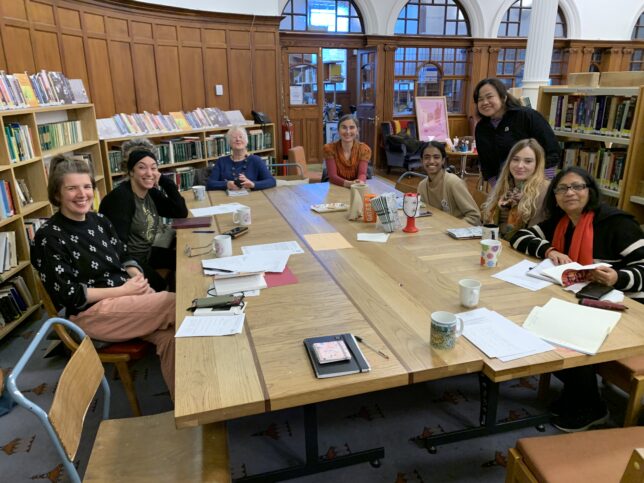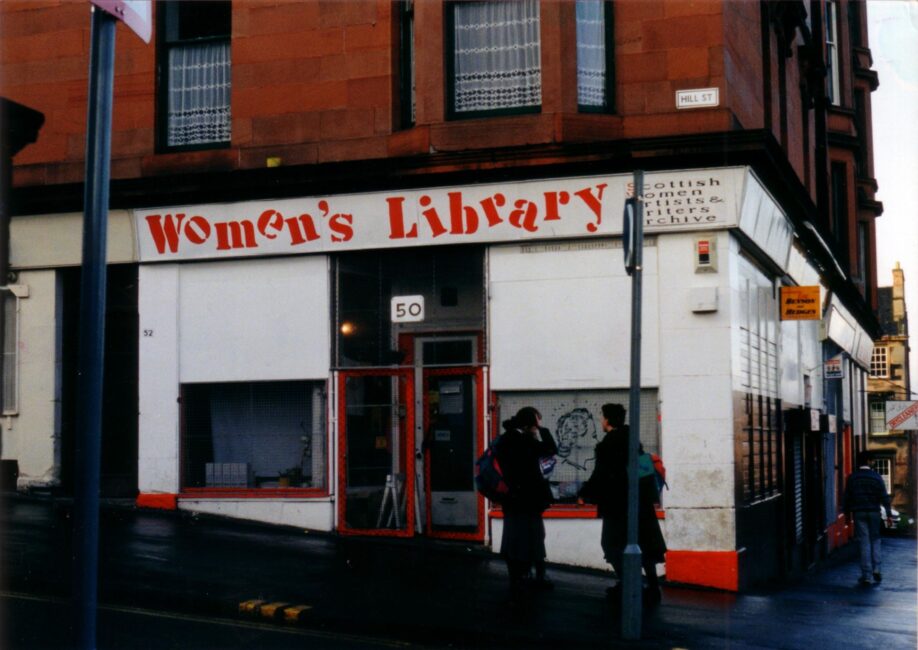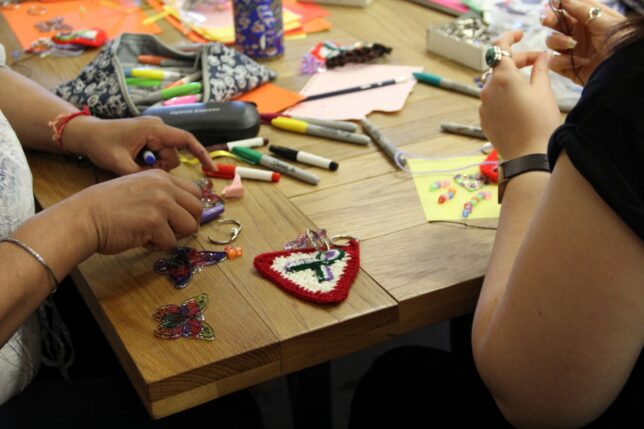Pauline gives a brilliant round-up of a very special Story Cafe this summer…
This Story Cafe (8th August) was part of the National Gallery Road Art Road Trip, and there was a great turnout! Wendy welcomed everyone and introduced Chloe and Alex from the National Gallery in London who would be leading the second half of the session.

This beautiful brooch in suffragette colours, from GWL’s museum collection, inspired the short story The Colour of Queens by Karen Campbell from 21 Revolutions: new writing and prints inspired by the collection at Glasgow Women’s Library which Wendy read first. It’s the story of Clara who, early in the 20th century, wants to attend classes at Glasgow School of Art. Her seemingly meek, tied to the house mother, quietly and effectively campaigns on her behalf with Clara’s father who forbids it at first.
While Clara draws exquisite butterfly wings at the Art School she always sees “the dry-brown corpse attached to the wing and the silver of the pin holding it”, a brilliant metaphor for the restricted lives most women lead. Clara also meets Lucy who persuades her to transfer from drawing to craft where she designs and makes the brooch. We learn something of her mother’s back story and understand why she so quietly encourages and supports her daughter’s desire for a different life. This is a subtle, subversive story and a great example of “soft power” which we all enjoyed, triggering an interesting discussion.
Wendy then read Seashells and Sandcastles for a Princess, a poem by Scottish-Ghanian poet, artist and lecturer Maud Sulter (1960-2008). GWL has long been a champion of Maud’s work, and she featured as one of the celebrated historic writers in the very first Open the Door Festival at the Library.
During the break a copy of 21 Revolutions was passed round so we could all admire the brooch in the purple, green and white suffragette colours.
Chloe and Alex then started the second half by asking us what percentage of paintings in the National Gallery we thought were by women. I think we were all shocked but not surprised to be told that it was less than 1% – just 24 paintings! We were introduced to one of these paintings The Horse Fair by 19th century French artist Rosa Bonheur (1822-1899) and were encouraged to “read” it. Were they stable-hands or maybe Gypsy Travellers? The horses would have been for sale so they are being paraded around and shown off before prospective buyers. And there in the centre in a blue coat, we are told, is Rosa, a still figure among all the movement.
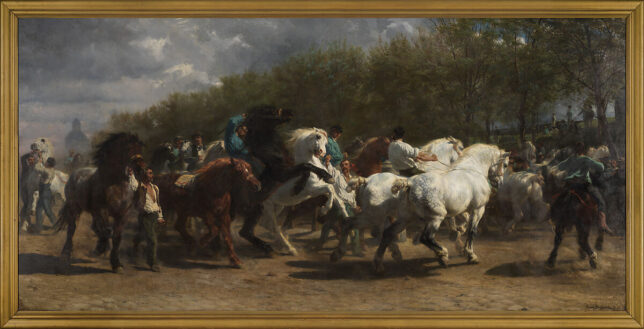
As she painted, she must have imagined what it would be like to be part of the the melee of horses and riders. It was painted in 1856 at about the same time as the portrait of Rosa by Louis Dubufe which we also studied. Her paintings were well-received and she found a niche for herself painting animals. She came to Scotland in 1855, exploring the Highlands and later produced The Highland Cattle Raid in 1860 which we saw on screen along with others including The Lion.
Rosa never married, often dressed in a masculine way and her companion for forty years was Nathalie Micas and following her death, the American artist Anna Elizabeth Klumpke. She was the first woman to be awarded the Légion d’honneur.
This was a most enjoyable Story Cafe with a difference and there were appreciative comments and very warm applause for Chloe and Alex.
21 Revolutions and Maud Sulter’s poetry are available from Glasgow Women’s Library.
The National Gallery have produced some fantastic short films about Rosa Bonheur, including this one:

